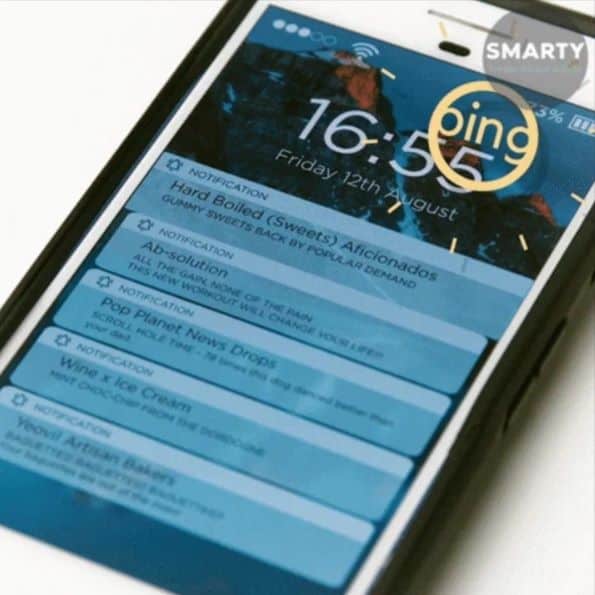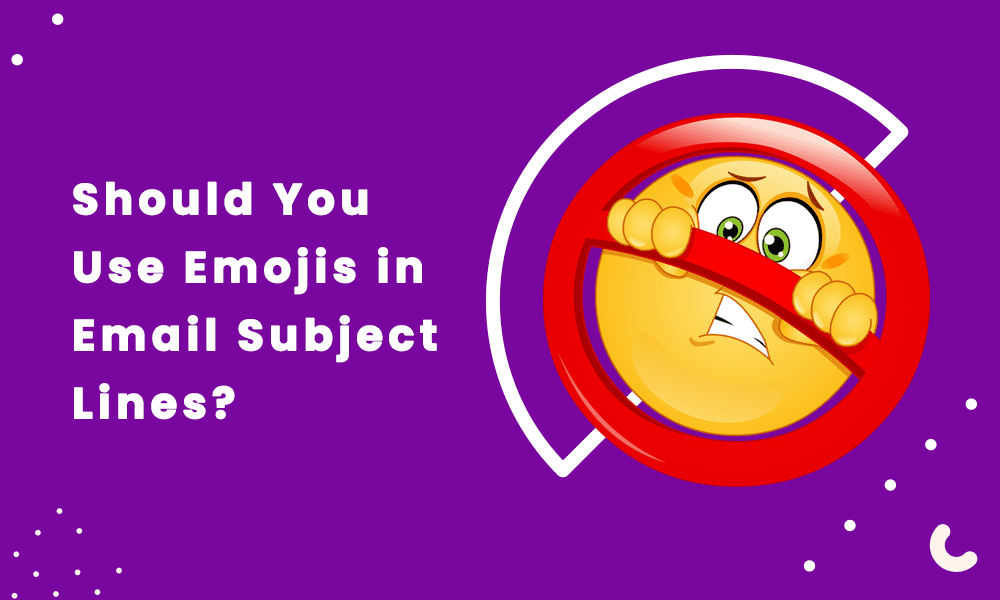With just a simple series of clicks, you hold the power to metamorphose a seemingly mundane and unremarkable email subject line into a captivating one, all through the addition of expressive email emojis.
Crafting the subject line or heading of an email message stands as one of the most intricate challenges in the realm of composition.
Seasoned marketers engage in an iterative dance of creation and revision, experimenting and fine-tuning until they believe they’ve deciphered the enigma of a subject line that entices immediate clicks and engagement.
The query arises: Should you insert emojis into the subject lines of your emails, or would you be better served by abstaining from their use?
Within the confines of this article, we will delve into both facets of this matter, allowing you to make an informed decision regarding the strategic incorporation of email emojis within the framework of your upcoming drip email campaign.
Table of Contents
The Case for Emojis in an Email Subject Line
Let’s begin by examining how emojis can add a certain flair to your email subject lines.

Emojis in email subject lines are popular
According to an article from Campaign Monitor, year after year, the rate of emojis appearing in email and mobile marketing has gone up by 775%.
That’s a ginormous increase!
Emojis are undoubtedly more popular in subject lines than ever before.
All you have to do is log into your email client of choice and look in your socials and promotions tabs. You’ll see countless subject lines that use emojis.
It will eventually reach the point where enough marketers are using emojis in emails that you’ll get left behind if you don’t.
According to a recent Adobe Emoji Trend Report, 44% of users are more likely to purchase products advertised using emojis. [Nethunt]
Looks great on mobile and desktop devices
Rather than open the newspaper to learn about what’s going on in the world today, everyone reaches for their smartphones.
A 2021 report from SuperOffice, a CRM provider, found that more than 80% of emails sent today are read on mobile devices as opposed to desktops.
You want to send emails that are mobile-optimized and will look as good on smartphones as they do on large displays.

Emojis don’t detract from this goal in any way. This does not mean you have to insert emojis everywhere. Use emojis to dress up your email subject line and add a human touch.
Read also: Red, Write, and Blue: The Best 4th of July Email Subject Lines
Lets you create attention-grabbing email subject lines
The shorter your subject line is, especially when keeping in mind mobile users, the better. This will ensure that nothing gets cut off.
The rule of thumb is not to exceed 60 characters. Emojis in place of words allow you to send the full breadth of your message but without surpassing the character limitation.
Highlights your message
If you see an email message in your inbox about Halloween accompanied by a pumpkin or a skull, that tells you pretty quickly what the crux of the email is. You don’t even necessarily have to read the subject line to know what it’ll be about.
When you see a siren emoji in an email subject line, you can glean pretty fast that the company is trying to tell you that this is the last call on a major sale.
The use of emojis presents your message in a quick, to-the-point fashion, which is good. You usually only have seconds to make an impression on a reader with your subject line.

Read also: Let Sparks Fly With These Valentine’s Day Email Subject Lines
The Case Against Emojis in an Email Subject Line

Email emojis can be great, but we have to talk about an eye-opening study from the Nielsen Norman Group in 2020 that might put the kibosh on your email emoji aspirations.
Their study involved 13 marketing emails that were then repurposed to exclude emojis.
Nielsen Norman next asked its participants to look at a version of the email and use three words to describe it.
The words were pulled from a provided list. The list included 12 negative words and 18 positive words.
The participants also had to rank how trustworthy they felt an email was on a scale of 1 to 7, with a 1 being the lowest score and a 7 being the highest score.
Half the participants only saw emails with emojis, and the other half only saw emails without emojis.
According to the findings, these words were used the most to describe emails with emojis:
| Description | Email with Emojis 🙂 😛 | Email without Emojis |
| Straightforward | 17.5% | 21.5% |
| Confusing | 9.8% | 17.3% |
| Frustrating | 10.4% | 15.95% |
| Dull | 27.8% | 14.25% |
| Boring | 25.2% | 19.09% |
So this tells us that the participants most ascribed traits like straightforward, confusing, and frustrating to emails without emojis. They also thought that emails with emojis were duller and more boring.
This might come as a bit of a shock to you, considering that you likely always thought that adding emojis to email subject lines was a surefire way to make your emails anything but dull and boring.
There’s more to this Nielsen Norman study. The same participants perceived emails sent without emojis as less valuable than those with emojis.
Emojis didn’t make an email seem more trustworthy, but their presence didn’t detract from the trustworthiness of an email either.
Interestingly, Nielsen Norman also found that an email wasn’t more likely to be opened just because the sender uses an emoji or several.
Now, we should note that this is one study, and thus the sample size is limited to only 50+ participants on either side. A sample size of a little over 100 isn’t large, and it’s hard to say if there’d be any differing opinions had the sample size been bigger.
That said, we wanted to include this study because it offers a lot of sobering insights.
Read also: 55 Exemplary Newsletter Subject Lines to Boost Email Open Rates
The Verdict – Tread Carefully and Be Realistic
The information in today’s article isn’t designed to encourage or dissuade you from using email emojis.
Rather, we want to present the facts both for and against the use of emojis in email subject lines so you can make an educated decision for your company’s next email campaign.
Emojis do have positive sentiments attached, but not for everyone. Some people view their inclusion in an email subject line as boring or dull.
You know your audience best. If you think they’ll react well to emojis in email subject lines, then feel free to use them, but always sparingly.
If time and evidence prove that your audience doesn’t respond well to emojis in your email subject lines, then reduce or even discontinue their usage.
Be realistic in your outcomes as well. Using emojis alone might not make more people open your emails, so don’t use emojis as a crutch.
Read also: Introduction Email Subject Lines To Captivate Your Audience
Conclusion
The omission of emojis in email subject lines shouldn’t necessarily be the stance adopted by marketing firms.
However, it is crucial to be cognizant of the fact that the inclusion of smileys and other emotive symbols might lead to a diminished perception from certain segments of your customer base.
Our fervent aspiration is that the insights imparted through this comprehensive guide facilitate your discernment of the opportune moments and appropriate contexts for the integration of emojis within your email communication :-P.
By meticulously gauging the dynamics of your target audience and the nuances of your messaging, you can deftly navigate the terrain of email subject lines, leveraging the persuasive power of emojis to enhance engagement and resonance, while remaining attuned to the potential sensitivities that might influence customer perceptions.

